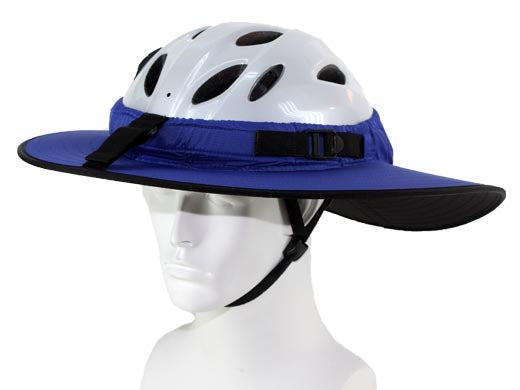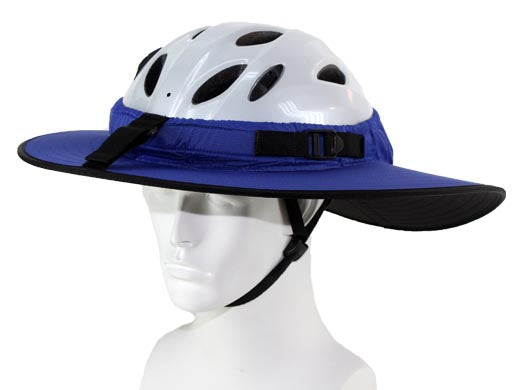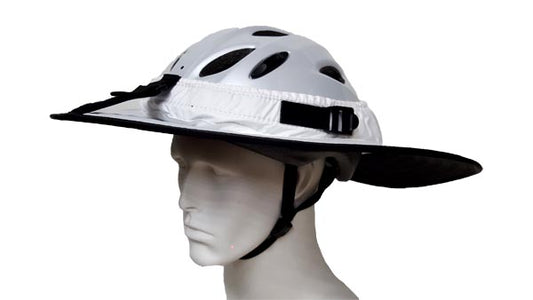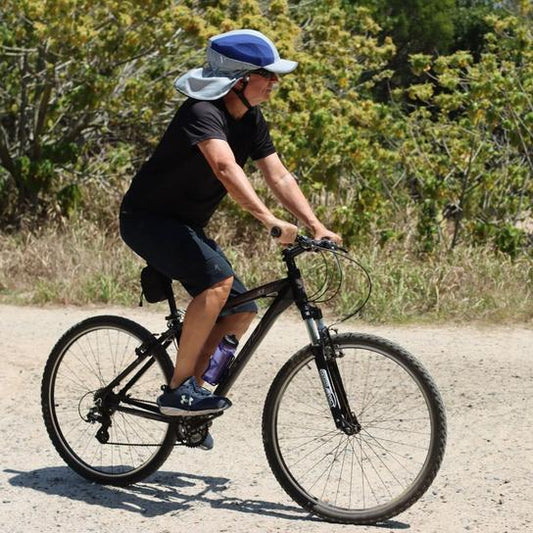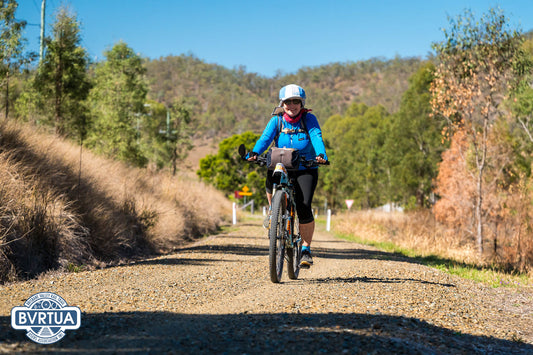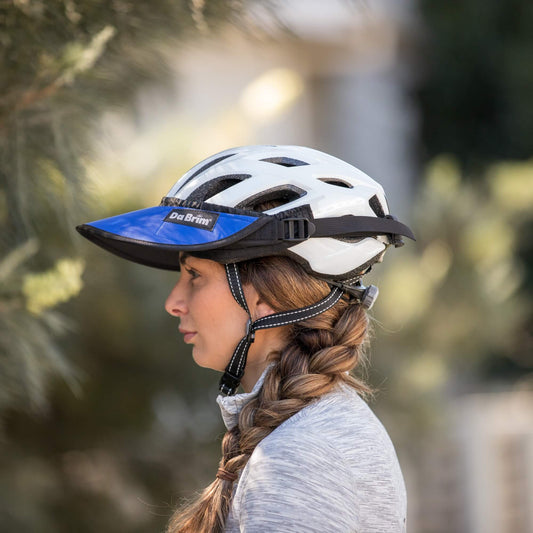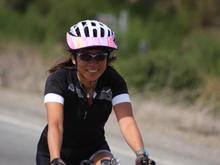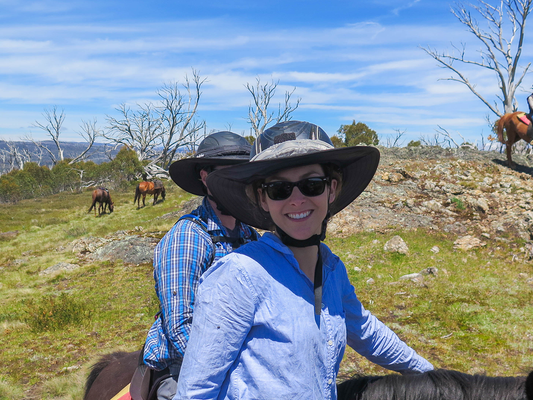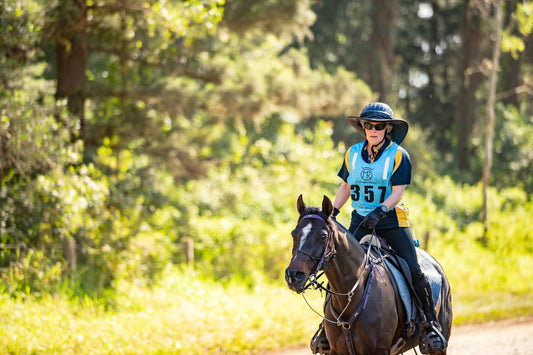Australia is known for its stunning landscapes, beautiful beaches, and outdoor lifestyle. However, with the country's summer sun comes a significant risk of overexposure to ultraviolet (UV) radiation, which can lead to serious health issues like skin cancer. With the highest skin cancer rates in the world, it's crucial for Australians to take sun safety seriously, especially during the summer months when UV levels are at their peak.
In this comprehensive guide, we'll explore the best strategies for staying sun safe this summer in Australia. We'll discuss the importance of sun protection, provide tips on how to effectively protect yourself, and introduce you to an innovative product that can make a big difference: the Cycling Classic Helmet Brim from SunBrims. Whether you're cycling, hiking, or just enjoying a day at the beach, this guide will help you stay protected under the harsh Australian sun.
Understanding the Dangers of the Australian Sun
1. The Intensity of UV Radiation in Australia
Australia’s geographical location contributes to its intense UV radiation levels, especially during the summer. The ozone layer, which helps protect the Earth from harmful UV rays, is thinner over Australia, leading to higher levels of UV exposure. According to the Australian Radiation Protection and Nuclear Safety Agency (ARPANSA), UV levels can reach extreme levels in many parts of the country, particularly in the northern regions.
UV radiation is categorized into three types: UVA, UVB, and UVC. While UVC rays are mostly absorbed by the ozone layer, UVA and UVB rays can penetrate the skin, leading to sunburn, premature aging, and an increased risk of skin cancer. The Australian Bureau of Meteorology often reports UV Index levels, which can help you understand the risk of sun exposure on any given day.
2. The Risk of Skin Cancer
Australia has one of the highest rates of skin cancer in the world, with two in three Australians diagnosed with the disease by the age of 70. Skin cancer is largely preventable, and understanding the risks is the first step in effective prevention.
There are three main types of skin cancer:
- Basal cell carcinoma (BCC): The most common but least dangerous form of skin cancer.
- Squamous cell carcinoma (SCC): Also common but more serious than BCC.
- Melanoma: The deadliest form of skin cancer, which can spread to other parts of the body if not detected early.
According to Cancer Council Australia, over 2,000 Australians die from skin cancer each year. However, with proper sun protection measures, the risk of developing skin cancer can be significantly reduced.
Top Sun Safety Tips for the Australian Summer
1. Slip, Slop, Slap, Seek, and Slide
The iconic Australian sun protection campaign "Slip, Slop, Slap" has been expanded to "Slip, Slop, Slap, Seek, and Slide" to cover all aspects of sun safety. Here’s how you can apply each step:
- Slip on protective clothing: Wear long-sleeved shirts and long pants made from tightly woven fabric to protect your skin from UV rays.
- Slop on sunscreen: Apply a broad-spectrum sunscreen with an SPF of at least 30. Reapply every two hours, or more often if swimming or sweating.
- Slap on a hat: Choose a broad-brimmed hat that covers your face, neck, and ears.
- Seek shade: Whenever possible, stay in the shade, especially during the peak UV hours between 10 a.m. and 4 p.m.
- Slide on sunglasses: Protect your eyes from UV damage by wearing sunglasses that meet the Australian standard AS/NZS 1067.
2. The Importance of Sunscreen
Sunscreen is one of the most effective tools in your sun protection arsenal. It’s essential to choose a broad-spectrum sunscreen, which protects against both UVA and UVB rays. The SPF (Sun Protection Factor) number indicates how well the sunscreen protects against UVB rays, which are responsible for sunburn.
To get the most out of your sunscreen, apply it generously to all exposed skin at least 20 minutes before going outside. Don’t forget often-missed spots like the ears, back of the neck, and tops of the feet. Reapply every two hours, and more frequently if you’re swimming or sweating.
3. Protective Clothing and Accessories
Clothing provides a physical barrier against UV rays, making it one of the most effective forms of sun protection. Look for clothing with a high UPF (Ultraviolet Protection Factor) rating, which indicates how much UV radiation the fabric blocks. For example, a UPF 50+ garment blocks over 98% of UV rays.
In addition to protective clothing, accessories like hats and sunglasses are essential. A wide-brimmed hat offers more protection than a baseball cap, as it shields your face, ears, and neck. Sunglasses should block 100% of UVA and UVB rays and fit snugly against your face to prevent UV rays from entering around the edges.
Cycling Classic Helmet Brim: An Innovative Sun Protection Solution
For those who love outdoor activities like cycling, sun protection can be challenging. Traditional hats and visors often don’t fit well under helmets, leaving cyclists exposed to harmful UV rays. This is where the Cycling Classic Helmet Brim from SunBrims comes in as an innovative solution.
1. What Is the Cycling Classic Helmet Brim?
The Cycling Classic Helmet Brim is a versatile sun protection accessory designed specifically for cyclists. It attaches easily to most standard helmets, providing a wide brim that shields your face, neck, and ears from the sun. Made from lightweight and durable materials, this helmet brim is designed to withstand the rigors of cycling while offering maximum protection from the sun.
2. Features and Benefits
- Wide Brim Coverage: The brim provides extensive coverage, protecting your face, neck, and ears from direct sunlight. This is especially important during long rides when you’re exposed to the sun for extended periods.
- Lightweight and Durable: The Cycling Classic Helmet Brim is made from lightweight materials that won’t weigh you down, yet it’s durable enough to handle the demands of cycling.
- Easy to Attach: The brim is designed to fit securely onto most standard cycling helmets, making it easy to attach and remove as needed.
- Enhanced Comfort: The brim is designed to be comfortable, with no interference with your helmet’s ventilation or fit.
- Stylish Design: Available in a variety of colors, the helmet brim allows you to protect yourself from the sun while looking stylish on your ride.
3. How the Cycling Classic Helmet Brim Enhances Sun Safety
For cyclists, the face, neck, and ears are particularly vulnerable to UV exposure. The Cycling Classic Helmet Brim provides an additional layer of protection that’s often overlooked. By shielding these areas from direct sunlight, the helmet brim reduces your risk of sunburn and long-term skin damage.
This product is especially beneficial for those who spend hours on the road or trail. Whether you’re commuting to work or embarking on a long-distance ride, the helmet brim ensures that you’re protected without compromising your performance.
4. Real-Life Applications and Testimonials
Many cyclists who have used the Cycling Classic Helmet Brim praise its effectiveness and convenience. For instance, one user noted that the brim kept the sun out of their eyes during a 100km ride, while another appreciated the added protection for their neck during long summer rides.
These testimonials highlight the practicality of the Cycling Classic Helmet Brim for anyone serious about cycling and sun safety. It’s an easy addition to your cycling gear that can make a significant difference in your sun protection strategy.
Sun Safety Beyond Cycling
While the Cycling Classic Helmet Brim is an excellent solution for cyclists, sun safety extends beyond this activity. Whether you’re at the beach, hiking, or simply spending time outdoors, it’s essential to apply comprehensive sun protection strategies.
1. Beach Days
The beach is a popular summer destination in Australia, but it’s also where UV exposure can be particularly intense due to the reflection off the water and sand. When heading to the beach, remember to:
- Use a beach umbrella or tent for shade.
- Reapply sunscreen frequently, especially after swimming.
- Wear a rash guard or other protective swimwear.
- Bring a wide-brimmed hat and UV-blocking sunglasses.
2. Hiking and Outdoor Adventures
For those who enjoy hiking, bushwalking, or other outdoor adventures, sun protection is just as crucial. In addition to wearing sunscreen and protective clothing, consider the following:
- Plan your hike for early morning or late afternoon to avoid peak UV hours.
- Wear a hat that provides 360-degree coverage.
- Use a hydration pack with a tube cover to protect against UV exposure.
- Take breaks in the shade to reduce your exposure.
3. Everyday Sun Safety
Even on days when you’re not engaging in outdoor activities, it’s important to incorporate sun safety into your daily routine. UV rays can penetrate through clouds and windows, so sun protection is necessary even on overcast days or when indoors near windows.
- Apply sunscreen as part of your morning routine.
- Wear protective clothing if you’ll be outside for extended periods.
- Use a lip balm with SPF to protect your lips.
- Be mindful of UV exposure during your commute, whether you’re walking, driving, or taking public transport.
The Role of Public Awareness and Education (Continued)
Public awareness and education are key components of sun safety in Australia. Campaigns like the Cancer Council’s "Slip, Slop, Slap, Seek, and Slide" have been instrumental in educating the public about the dangers of UV radiation and the importance of sun protection. These campaigns have significantly raised awareness about skin cancer risks and have encouraged Australians to adopt sun-safe behaviors from a young age.
However, the challenge remains to keep these messages fresh and relevant, especially as new generations grow up with different attitudes and behaviors towards sun exposure. Continued public education efforts are essential to ensure that everyone, regardless of age, understands the risks associated with UV exposure and the steps they can take to protect themselves.
1. Schools and Community Programs
Schools play a vital role in promoting sun safety among children and adolescents. Incorporating sun protection education into school curricula helps instill good habits early on. Programs that teach children about the importance of wearing hats, applying sunscreen, and seeking shade can lead to lifelong sun-safe behaviors.
Community programs and local government initiatives also contribute to public awareness. Events like "SunSmart" days, where communities come together to learn about sun safety and engage in outdoor activities with proper protection, help reinforce these important messages.
2. Workplace Initiatives
Employers can also play a part in promoting sun safety, particularly for outdoor workers who are at higher risk of UV exposure. Providing employees with sun protection gear, such as hats and sunscreen, and encouraging breaks in the shade are practical steps that can reduce the risk of sunburn and long-term skin damage.
Workplace initiatives might also include sun safety training, where employees learn about the dangers of UV radiation and the best practices for staying safe while working outdoors. Employers who prioritize sun safety demonstrate their commitment to the well-being of their staff, which can lead to increased job satisfaction and productivity.
3. The Role of Healthcare Providers
Healthcare providers, including dermatologists, general practitioners, and pharmacists, are on the front lines of sun safety education. Regular skin checks and consultations provide opportunities for healthcare professionals to educate patients about the importance of sun protection and the early signs of skin cancer.
Healthcare campaigns that encourage regular skin cancer screenings can help catch potential issues early when they are most treatable. Pharmacists can also play a role by recommending high-SPF sunscreens and educating customers on proper application techniques.
4. Digital and Social Media Campaigns
In today’s digital age, social media and online platforms are powerful tools for spreading sun safety messages. Organizations like the Cancer Council and SunSmart use these platforms to reach a broad audience with tips, educational content, and reminders about sun protection.
Social media campaigns can be particularly effective in reaching younger audiences who may not be as engaged with traditional forms of media. By using hashtags, influencer partnerships, and engaging content formats like videos and infographics, these campaigns can raise awareness and encourage proactive sun-safe behaviors.
Conclusion
Staying sun safe during the Australian summer is not just a recommendation; it's a necessity. With the country’s high UV levels and the ever-present risk of skin cancer, taking proactive steps to protect yourself from the sun is crucial. Whether you're spending the day at the beach, cycling through the countryside, or simply going about your daily routine, incorporating sun safety into every aspect of your life is essential.
The Cycling Classic Helmet Brim from SunBrims offers an innovative and effective way for cyclists to stay protected under the harsh Australian sun. By shielding your face, neck, and ears from harmful UV rays, this product allows you to enjoy your ride while reducing your risk of sunburn and long-term skin damage.
Remember, sun protection is a multi-faceted approach that includes using sunscreen, wearing protective clothing, seeking shade, and staying informed through public awareness initiatives. By making sun safety a priority, you can enjoy all that the Australian summer has to offer while keeping yourself and your loved ones safe.
For more information on sun safety, visit Cancer Council Australia and SunSmart. These resources provide comprehensive guidance on how to protect yourself from UV radiation and reduce your risk of skin cancer.
